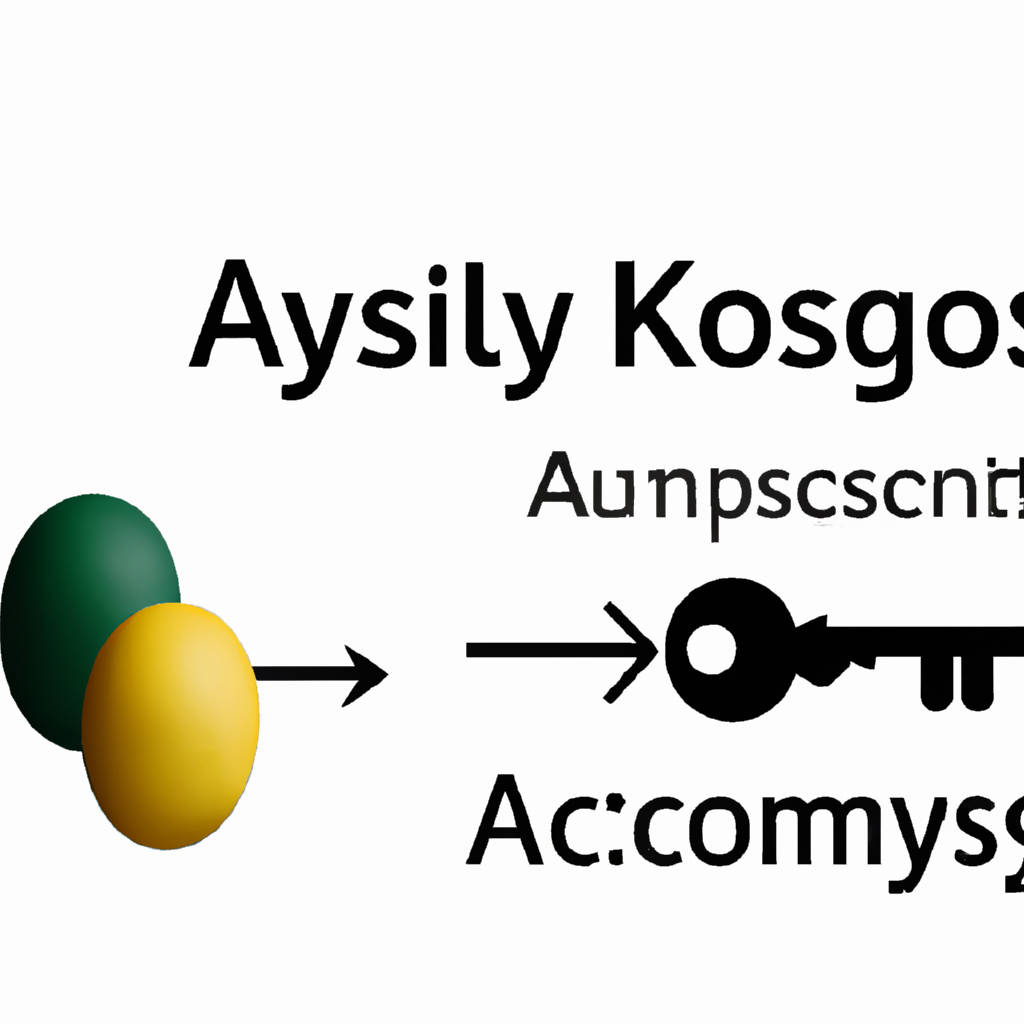The impending obsolescence of passwords is becoming increasingly evident in the realm of digital security. With the rapid evolution of technology, the traditional method of safeguarding personal information and accounts through alphanumeric combinations is rapidly fading. The reliance on passwords as a primary form of security is being challenged by more sophisticated and secure methods.
Biometric authentication, such as facial recognition, fingerprint scanning, and even retina scanning, are taking precedence over the antiquated password system. In addition, two-factor authentication and multi-factor authentication, which involve the user providing two or more verification factors, are also gaining popularity. These methods provide a more robust security framework by combining something the user knows (like a PIN), something the user has (like a smartphone), and something the user is (like a biometric feature).
This paradigm shift is fueled by the increasing rates of cybercrime and identity theft, which have exposed the glaring vulnerabilities of password-based security. Despite the nostalgia associated with passwords, their demise seems inevitable as technology pioneers strive to create a safer digital landscape.

Exploring Passkeys
Exploring the concept of passkeys is an intriguing venture into the realm of security systems, encryption, and data protection. A passkey, in simple terms, is a secret code or phrase that allows access to a specific area, system, or data. The design and implementation of passkeys play a pivotal role in safeguarding valuable information in our increasingly digital world. Passkeys can range from simple numeric or alphanumeric codes to highly complex patterns and biometric data.
Passkeys are ubiquitously used in our daily lives, whether to unlock smartphones, access emails, or secure banking transactions. They are also integral to the operation of various industries, including finance, healthcare, technology, and defense. The complexity and uniqueness of a passkey directly influence its effectiveness in deterring unauthorized access. Therefore, creating a robust passkey often requires a thoughtful blend of characters, symbols, and numbers.
However, passkeys also present unique challenges in terms of management and memory. With the multitude of applications requiring distinct passkeys, remembering them all can be a daunting task. Thus, password management tools have gained popularity, providing a secure vault for storing numerous passkeys. Moreover, there is an ongoing debate about the balance between passkey complexity and user-friendliness. While a complex passkey provides robust security, it may also lead to frequent resets due to forgotten passwords.
On the other hand, the advent of biometrics has revolutionized passkey systems. Fingerprints, facial recognition, and iris scans offer unique identifiers that are extremely difficult to replicate, providing an enhanced layer of security. However, biometric passkeys also raise concerns about personal privacy and the potential misuse of sensitive biometric data.
In conclusion, exploring passkeys is a fascinating journey into the heart of information security. As technology continues to evolve, it will be interesting to see how passkey systems adapt and innovate to provide more secure, user-friendly, and privacy-conscious solutions.
Adopting Passkeys for Google Accounts
Adopting passkeys for Google Accounts represents a significant stride towards enhancing online security. It’s a measure aimed at fortifying user data and privacy, ensuring that only authorized individuals can access the relevant accounts. It’s a step beyond the traditional username and password routine, offering an additional layer of protection against cyber threats.
Implementation of passkeys involves the use of two-factor authentication (2FA), where users are required to provide two types of identification before accessing their Google Accounts. Typically, this involves something the user knows (like a password), and something the user possesses (like a smartphone to receive a passkey).
This mechanism is particularly beneficial in the context of modern cybercrime strategies, where hackers often employ sophisticated tactics to crack passwords and gain unauthorized access to accounts. By requiring a passkey sent to a trusted device, it becomes exceedingly challenging for hackers to intrude, as they would need both the user’s password and physical access to their trusted device.
The adoption of passkeys also encourages users to be more vigilant and proactive in securing their online presence. It promotes the regular updating of security settings and reminds users of the importance of safeguarding their digital information.
However, while adopting passkeys for Google Accounts significantly enhances security, it’s not without its challenges. Users might find it inconvenient to have to use a second device every time they log in. Additionally, there’s the risk of losing access to the account if the trusted device is lost or stolen.
Despite these potential issues, the benefits of using passkeys far outweigh the drawbacks. The continued rise in cyber threats necessitates the implementation of robust security measures, and the adoption of passkeys is a powerful tool in this fight.
In conclusion, adopting passkeys for Google Accounts is a progressive step towards improving online security. It’s an effective strategy in safeguarding user data, reducing the risk of unauthorized access, and encouraging individual responsibility in maintaining digital privacy.

Passkeys: A Shift in Authentication Paradigm
Passkeys represent a significant departure from traditional authentication methods, signaling a shift in the paradigm of securing digital platforms and processes. This new approach cuts across various sectors, from banking to social media, and has become almost indispensable in our increasingly digital world. The concept of passkeys involves the use of unique codes, often randomly generated, which are then sent to the user’s device for verification. It’s a dynamic and secure method that ensures the user is the only one who has access to the code at that particular time, unlike static passwords that are more susceptible to hacking.
This new paradigm of authentication is not just about enhancing security. It’s also about improving user experience. For instance, the frustration of forgetting a password is significantly reduced as passkeys are usually one-time use and can be easily regenerated. It also minimizes the need to remember multiple passwords for various platforms.
However, like any other technology, passkeys have their challenges. One major concern is the reliance on mobile networks or internet connections for sending and receiving passkeys. Any disruption in these services can prevent users from accessing their accounts. Similarly, if a user’s device is lost or stolen, it poses a risk as the thief could potentially access the passkeys.
Despite these challenges, the shift to passkeys as a predominant form of authentication signifies an important evolution in digital security. It reflects our ongoing efforts to balance the need for strong security measures with the desire for convenience and ease of use in our digital interactions. As technology continues to advance, it’s likely that we’ll see further developments in this area, with passkeys playing a crucial role in shaping the future of digital authentication.
Enhanced Security with Passkeys
Implementing passkeys significantly heightens the fortification of digital systems against unauthorized access. Passkeys function as an additional layer of security, ensuring that only those with the correct passkey can access the data or system. A passkey, often a sequence of characters or a digital certificate, is considerably harder to crack than a typical password. Therefore, its usage substantially reduces the risk of data breaches and cybercrimes.
It is worth noting that the effectiveness of passkeys is contingent on their complexity and uniqueness. For maximum security, it is advisable to employ passkeys with a combination of alphanumeric and special characters, as well good practices such as regular updating and refraining from sharing these keys. Furthermore, many systems are now incorporating two-factor authentication that requires a passkey in addition to a password. This dual security measure exponentially increases the difficulty for unauthorized individuals to breach the system.
While passkeys can provide enhanced security, it is critical to remember that no system is impervious to all threats. As such, the use of passkeys should be considered as a component of a comprehensive and multi-layered approach to cybersecurity. The security landscape is constantly evolving, and it is important to keep pace with the latest security measures, including the use of passkeys, to protect sensitive information and ensure the integrity of digital systems.

Simplifying User Authentication Processes
User authentication processes have long been a crucial part of ensuring data safety and privacy in digital platforms. However, the traditional methods can often be complex and inconvenient, with multiple steps and strict requirements for password creation. This complexity can lead to user frustration and may even hinder the adoption of the platform by potential users. To address this, many companies are now aiming to simplify their user authentication processes. One common strategy is to employ single sign-on systems, which allow users to access multiple applications or websites with a single set of login credentials. This not only reduces the burden of remembering numerous passwords but also streamlines the user experience across different platforms.
Biometric authentication, such as fingerprint or facial recognition, is another method that is gaining popularity due to its simplicity and high level of security. Furthermore, passwordless authentication methods, which include magic links sent via email or SMS, or authentication apps that generate time-based one-time passwords, offer a more straightforward approach without compromising security. Another effective approach is employing multi-factor authentication where users have to provide two or more pieces of evidence to an authentication mechanism. This can significantly enhance security while maintaining user-friendliness if implemented correctly.
By simplifying user authentication processes, businesses can improve user satisfaction and increase the rate of successful logins, leading to enhanced platform usage and productivity. It is essential, however, to ensure that any simplification does not compromise the security and integrity of user data. As a result, it is a delicate balance to strike, but with the right strategies and technologies, it is indeed possible to provide a simpler yet secure user authentication experience.
Future Implications of Passkey Adoption
The future implications of passkey adoption can be viewed from multiple perspectives, primarily focusing on security, privacy, convenience, and potential misuse. Looking through the lens of security, the implementation of passkeys is expected to bring a significant enhancement in overall user verification processes. It could potentially mitigate risks associated with conventional password systems, such as hacking and phishing attacks. However, the adoption of passkeys also raises serious questions about privacy. As biometric and unique pattern data are used to create passkeys, it becomes crucial to ensure that individual’s sensitive data is not misused or compromised. This aspect of data protection needs to be addressed adequately for a wider acceptance of passkeys.
From a convenience standpoint, passkeys can remove the hassle of remembering multiple complex passwords. Users could authenticate themselves seamlessly across various digital platforms using a single passkey. This could increase the speed of transactions and overall user experience. However, the flip side of this convenience is the potential misuse of passkeys. If a passkey is stolen or copied, it could lead to unprecedented access to a user’s personal and financial information. This could lead to identity theft or financial fraud on a massive scale. Therefore, robust measures must be in place to detect and prevent any such misuse.
In the future, as passkeys become more sophisticated and incorporate elements such as biometrics or behavioral patterns, they can provide an additional level of security and convenience. However, it’s also essential to ensure that the adoption of passkeys does not lead to an invasion of privacy or misuse of personal data. A balance must be struck between security, convenience, and privacy to ensure that the future implications of passkey adoption are primarily positive and beneficial to the users.
